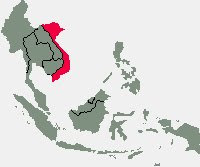

By and large, investors will often go past the obvious choices and end up picking dicey stocks to buy. If people ask you for stock tips and you pick Hongkong Bank or Public Bank or YTL Power, they are likely to frown at you as these are obvious choices. But if you give them what CIS would call a “cold case”, they will nod and say thank you.
There is a category of stocks which I will refer to as “no-brainer stocks”. Hongkong Bank, Public Bank and YTL Power shares do not qualify as no-brainer stocks.
There are two that immediately come to mind – Visa and Mastercard – for their solid business models. For every single transaction, they get a cut. They are the top two cards and the bigger they get, the more indispensable they are to retailers and the harder it gets for competition to muscle in.
The more retail outlets they secure, the stronger they get. They assume no debt should card holders fail to pay their bills. Their business is highly scalable and their capital expenditure gets smaller as they grow bigger.
Why not just buy MasterCard and Visa and forget about investing period?
MasterCard’s profit more than doubled in the first quarter as more customers outside the US used their credit and debit cards for purchases. Cardholder spending within the US rose too, but at a moderate pace, indicating that while Americans are increasingly turning to plastic in a weak economy, emerging markets are becoming just as lucrative.
The company earned US$446.9mil or US$3.38 per share for the January to March period. That is up from US$214.9mil, or US$1.57 a share, in the same timeframe last year. Even after excluding the effects of a gain from terminating a customer business agreement and another gain from selling its remaining holdings in the Brazilian company Redecard, MasterCard’s earnings per share totalled US$2.59.
That was above the average analyst estimate of US$2 a share, according to Thomson Financial. Shares rose US$31.48 or 13% to close at US$273.98 last Tuesday after rising to a 52-week high of US$278.72 earlier in the session. The stock is up more than 20% since the beginning of the year. MasterCard Inc is like Visa Inc, in that it processes card payments, but its member banks issue the credit.
Purchase volume with both credit cards and debit cards rose, driving MasterCard’s US gross dollar volume up 8.9% from a year ago to US$259bil, despite a decline in US credit card advances. The problem with investing in MasterCard or Visa is that they pay negligible dividends. Hence your point of entry is important. To negate that, you have to do average cost investing as in buying in regular intervals over a long period of time.
There is the currency risk but that’s the same with any stock. There is also some litigation risk (unfair fees) but that is negligible compared to overall revenue and earnings.
Our very own no brainer
Is there a no-brainer stock in KLSE? Many may not agree with me, but out of the over 1,000 odd companies, Berjaya Sports Toto Bhd (BToto) comes closest to being one.
The principal activities of BToto are investment holding and provision of management services. The principal activities of the group are operations of Toto betting; leasing of online lottery equipment; manufacture and distribution of computerised lottery systems; property investment and development; and investment holding.
Sports Toto offers six games, which are drawn three days a week. The digit games include four D, five D and six D while the Lotto games include Toto four/49, six/42 Jackpot and Super Toto six/49. The company is the sole national lotto operator in Malaysia. It has the largest network of over 680 outlets and the most number of games in Malaysia.
Through its subsidiary, Philippine Gaming Management Corp, BToto supplies and maintains a computerised online lottery system in the Luzon region of the Philippines. BJTOTO also has a 51.5% stake in Berjaya Lottery Management (HK) Ltd (BLM), which is engaged in the management of social lottery operation.
BLM’s 71% owned subsidiary is a manufacturer and distributor of computerised lottery systems. BJTOTO’s other subsidiaries, FEAB Properties Sdn Bhd and FEAB Land Sdn Bhd, are involved in property development.
The new political landscape may cause some to worry about the company’s operations in certain states. BToto has 2% of its outlets in Kedah and together with Perak, it represents 11% of total outlets. If you really want to talk of political risk, then one should also look at it this way – that there is likely to be near zero chance of seeing more competition as well.
Here are some salient points about BToto:
Ebitda margins: 2006 (17.9%), 2007 (18.5%)
Gross dividend: 2006 (53.8 sen) 2007 (45.6 sen)
ROE: 2006 (33.4%) 2007 (45.2%)
Rising free cashflow: 2006 (26 sen) 2007 (30 sen) 2008 (33 sen)
The other players
BToto is better positioned than Magnum Corp Bhd or Tanjong plc due to its Lotto operations. As of 4Q07, BToto has become the new market leader overtaking Magnum for NFO games alone. Despite the poor marketing efforts in bringing the Lotto games to the Malaysian public, the game has gained in popularity, especially among foreign workers.
Lotto games in Australia, Britain and the US have always captured a remarkable share of gaming dollar. There is still a lot of leverage in Lotto games in Malaysia. To capture more market share, BToto needs to come up with bigger minimum guaranteed jackpots (now at RM2mil). I am sure that it will draw more players if the minimum jackpot were to be RM5mil or even RM10mil.
Other than Lotto, BToto has more games than its two rivals namely 5D and 6D. Magnum has only one game (4D) while Tanjong has two games (3D and 4D). If either of them tries to play catch up, they will already have lost the first mover advantage. Plus Lotto and non-4D games have a lower payout than the usual 4D games.
The number of new outlets have been frozen for all players. BToto has a better reach with 681 outlets (45% market share), Magnum has 485 outlets (32%) while Tanjong has 348 (23%). Plus BToto has more outlets in the Klang Valley than Magnum.
Dividend appeal
BToto pays a consistent 8%-9% dividend yield, which if viewed against the deposit returns, is rather impressive. It continues to pay out almost 100% of earnings. If you were to include the annual RM100mil odd share buybacks, the payout ratio improves to 120%. If the company were to declare that it will cancel the shares bought back, then the share price would move to a much higher platform. Chances are, the accumulated shares will be declared as bonuses at the right time. Right now it has more than 96 million shares in treasury.
Berjaya Land, the biggest shareholder of BToto, has been buying more shares in the open market boosting its stake from 48% to nearly 50% in the last couple of months. The biggest risk would have to be management’s track record. BLand is the controlling shareholder. If the huge Vietnam property venture were to run into difficulty, could we see BToto borrowing funds to lend to BLand (again?)?
I assume that the management has learnt its lesson well in that regard. But even if they were to do that, there would be ample time to get out of the stock.
No-brainer traits
No-brainer stocks generally do not require complicated strategic directions from management to perform.
The business model is intact and by virtue of its position in the market place, it basically just reaps the rewards. With these kinds of stocks, one needs to have a long-term average cost investing attitude to reap the long-term benefits.
A no-brainer stock relies a lot less on management input. There should be a lot less execution risks, i.e. new projects or new ventures. Banks are left out of the running because of its dependency on the business cycle. Not to mention, the “unknown risks” such as exposure in new-fangled instruments or exposure to counter-party risks.
It is not going to give you 50% capital return a year. The way to invest is to look at dividend yield relative to stock price.
One should accumulate if the dividend yield goes towards 9% or 10%.
One should take profit if the dividend yield goes down to 5%-6% (implying the stock price has risen).
Again, no-brainer stocks are not meant to give you outstanding returns, it is meant to give you a reasonable return year in year out (8%-10%) with comparable risk.
p/s: photos: Joyce Sialni & Haruna Yabuki

























hello Dali,
Just one question(+ hopefully you'll give me an honest answer...)
Have you put your money where your mouth is + actually bought the shares? or are you waiting for even lower levels?
11:43 AM
k,
you will notice that from my past to present postings... i have been consistent, and I NEVER REVEAL THE TRADES I MAKE .... you buy at yr own peril, I may frontload and front run you all, and I might post and dump shares on you ... so buy, don't buy, up to you ... you buy I am not happier, you lose money, I won't be sad, you make money you won't give me a share ... I am not an investment adviser with a funds mgmt unit or a broker ...
So , buy if you want to, but don't even bother to ask if I have the shares already or intend to buy lower... I am not here to build a Buffett like investing track record. Some shares will make money, some won't. Hopefully you would have read my entire 3 years of blog postings, then you should get a good idea of what I think, how I think and why/when I write about stocks, and whether you can rely on them. 3 years is not long nor short, you can form your own opinion. What I won't be doing is TO JUSTIFY my recommedations - I tell you now, I am sometimes unethical, I am sometimes a bastard, but I try to be a nice bastard most of the time.
I am a scardy shit, I don't reveal my trades because I fear I will be ridiculed when I am wrong, and I also do not want to boast when I make some money.
Cheers, and good luck... my general perception is the mkt is still pretty bad and still looking for 1,150 ... ok!!!